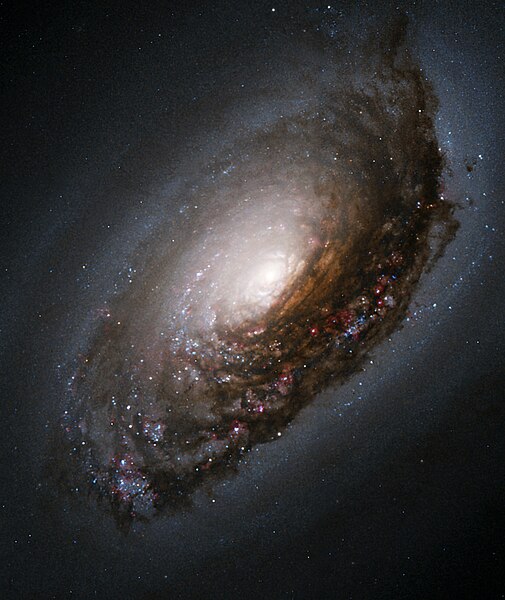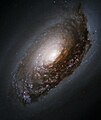ملف:Blackeyegalaxy.jpg

حجم هذه المعاينة: 505 × 600 بكسل. الأبعاد الأخرى: 202 × 240 بكسل | 404 × 480 بكسل | 897 × 1٬065 بكسل.
الملف الأصلي (897 × 1٬065 بكسل حجم الملف: 774 كيلوبايت، نوع MIME: image/jpeg)
تاريخ الملف
اضغط على زمن/تاريخ لرؤية الملف كما بدا في هذا الزمن.
| زمن/تاريخ | صورة مصغرة | الأبعاد | مستخدم | تعليق | |
|---|---|---|---|---|---|
| حالي | 09:46، 2 يونيو 2005 |  | 897 × 1٬065 (774 كيلوبايت) | CWitte | This image of M64 was taken with Hubble's Wide Field Planetary Camera 2 (WFPC2). The color image is a composite prepared by the Hubble Heritage Team from pictures taken through four different color filters. These filters isolate blue and near-infrared lig |
استخدام الملف
ال6 صفحات التالية تستخدم هذا الملف:
الاستخدام العالمي للملف
الويكيات الأخرى التالية تستخدم هذا الملف:
- الاستخدام في af.wikipedia.org
- الاستخدام في ast.wikipedia.org
- الاستخدام في az.wikipedia.org
- الاستخدام في be.wikipedia.org
- الاستخدام في bg.wikipedia.org
- الاستخدام في bn.wikipedia.org
- الاستخدام في br.wikipedia.org
- الاستخدام في bs.wikipedia.org
- الاستخدام في ca.wikipedia.org
- الاستخدام في ce.wikipedia.org
- الاستخدام في ckb.wikipedia.org
- الاستخدام في co.wikipedia.org
- الاستخدام في cs.wikipedia.org
- الاستخدام في cy.wikipedia.org
- الاستخدام في de.wikipedia.org
- الاستخدام في diq.wikipedia.org
- الاستخدام في el.wikipedia.org
- الاستخدام في en.wikipedia.org
- Messier object
- Coma Berenices
- List of galaxies
- Portal:Astronomy/Picture/May 2005
- Portal:Astronomy/Picture/12 May 2005
- Portal:Astronomy/Picture/Week 48 2005
- User:ComaDivine
- User:Superfo
- User:Gilgamesh~enwiki/Favorite images
- List of spiral galaxies
- Portal:Solar System
- Portal:Solar System/WikiProjects
- User:Passargea/Favourite pictures/Space
- User:Logos/Hall of Galaxies
- User talk:Example/Archives/2008/April
- User:Mike YuHong Chen
- User:Stefania.deluca/sandbox
- Wikipedia:Userboxes/Science/Astronomy
- Wikipedia talk:WikiProject Userboxes/Ideas/Archive 14
- User:TheEagle107
- User:Diriector Doc/Ubx/Galaxy
- User:Diriector Doc/UbxGalaries/Nature
- User:The Anonymous Gaul
اعرض المزيد من الاستخدام العام لهذا الملف.

